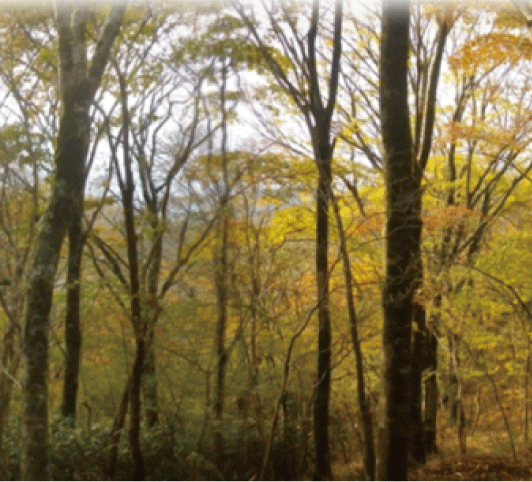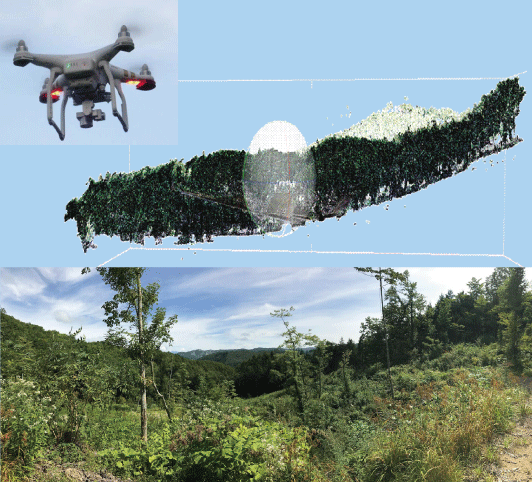HAYASHI Laboratory
Nagoya University, Institute of Materials and Systems for Sustainability
Nagoya University, Graduate School/ School of Engineering, Civil and Environmental
Engineering, Environmental Symbiosis and Ecology System (Energy and Environmental
Ecology System) Cooperation Laboratory
|
 |
 |
|
|
Study on renewable energy and environment and ecosystem service assessment for achieving natural symbiotic society
In this laboratory we are conducting research in the following research
fields.
We are conducting research to realize a sustainable society in harmony with nature by assessing the impact of energy and the environment. Especially focusing on land use and spatial evaluation of natural environment,
we are working on comprehensive solution of issues related to renewable energy (biomass, small hydro, solar power, etc.), ecosystem services,
environment, economy and society. Along with the environment assessment from a small scale field survey to global scale beyond country, we are engaged in a research with an interdisciplinary
approach combining spatial analysis such as GIS (Geographical Information System), AI (Artificial Intelegence), UAV(Unmanned
Aerial Vehicle, what we call, drone), field survey and so on.
|
The main keywords for our study are as follows.
- Spatial assessment of energy and environmental systems
- Spatial assessment of renewable energy such as biomass, small hydro and solar power
- Spatial assessment of natural environment and ecosystem services
- Spatial analysis using AI, drone and GIS (Geographical Information System)
- Various environmental evaluation and integrated evaluation ranging from field survey to global scale assessment
- Various environmental impact assessment, environmental policy and system
analysis of renewable energy
- Research on international environmental cooperation
- etc
|
|
|
|
| |
| ▼▼▼Main activities of the laboratory |
|
<Analysis tool>
 Land assessment and spatial analysis of ecosystem service by satellite
data and GIS Land assessment and spatial analysis of ecosystem service by satellite
data and GIS 3D image analysis using UAV (drone) 3D image analysis using UAV (drone) Integrated global evaluation using AI (Artificial Intelligence) Integrated global evaluation using AI (Artificial Intelligence)  Forest field survey (Nagoya city, Kasugai city, Takayama city, Nakatsugawa
city etc.) Forest field survey (Nagoya city, Kasugai city, Takayama city, Nakatsugawa
city etc.) Social science research by questionnaire Social science research by questionnaire
 Policy assessment Policy assessment
<Research cooperation with domestic and overseas research institutes >
 Overseas: BC 3 (Basque Centre for Climate Change, Spain), Australia National University (Australia), Arizona State University (USA) Overseas: BC 3 (Basque Centre for Climate Change, Spain), Australia National University (Australia), Arizona State University (USA)
・・Visiting Associate Professor (December 2015 - January 2016)
・・Visiting Professor(Scheduled for November - December 2018)
 Domestic: National Institute for Environmental Studies (Tsukuba, Fukushima
branch), Osaka University, Tokyo University of Agriculture, Chubu University,
Toho University, Nihon University, etc.
<Conference Presentation> Domestic: National Institute for Environmental Studies (Tsukuba, Fukushima
branch), Osaka University, Tokyo University of Agriculture, Chubu University,
Toho University, Nihon University, etc.
<Conference Presentation>
 Overseas Overseas
・USA , Canada, France, Germany, Spain, the Netherlands, Czech
・Cambodia, Myanmar, Thailand, China, Korea, Hong Kong
・South Africa, Ghana, Columbia, Chile
・etc.
<Internship>
 Overseas, international organizations Overseas, international organizations
・USA, South Korea (Korea Environment Institute))
・ITTO(The International Tropical Timber Organization)
 Domestic institute Domestic institute
・National Institute for Environmental Studies
・Aichi Environmental Research Center
・Tokyo Kyuei Co. Ltd., Nippon Koei Co. Ltd., IDEA Consultants, Inc.
・etc.
<Careers of graduates>
 University: Ritsumeikan University, Nagasaki University University: Ritsumeikan University, Nagasaki University
 Municipalities: Aichi Prefecture, Kanazawa City, Suzuka City Municipalities: Aichi Prefecture, Kanazawa City, Suzuka City Enterprises: Toyota Motor Corporation, Sumitomo Metal Mining Co., Ltd.,
Pasco Cooperation, Nippon Koei Co., Ltd. venture capital firm, etc. Enterprises: Toyota Motor Corporation, Sumitomo Metal Mining Co., Ltd.,
Pasco Cooperation, Nippon Koei Co., Ltd. venture capital firm, etc.
|
|
 |
| |
| ▼▼▼ Current Research Activities |
| |
| Studies on environmental evaluation related to land use by GIS – Biomass/Energy
environment evaluation |
| |
Collaborative research: National Institute for Environmental Studies, Fukushima
branch
--------------------------------→Under consutraction
Energy and environmental evaluation using satellite data and GIS technology
For spatial evaluation of energy, environment and ecosystem services of city and prefectural scales, space analysis is carried out using satellite data, GIS information and so on.
We are conducting a spatial analysis of Nagoya City, Toyota City and its surrounding areas in Achi prefecture, Tokai region. Also, we are working on developing a simple evaluation method that can be applicable to developing countries, such as Myanmar and Laos.
|
|
Collaboration: International Digital Earth Applied Science Research Center,
Chubu University, Osaka University
--------------------------------→Under consutraction
By using UAV (drones), we are studying the assessment methods that estimate
the amount of carbon stock and their biomass. Utilizing the seasonal images
and videos of forests collected by drones, we develop 3D forest models
and estimate the amount of carbon stock and biomass. Current research fields
include Takayama City and Nagatsugawa City in Gifu Prefecture, Nagoya City
and Kasugai City in Aichi Prefecture, Samani Town in Hokkaido and Aso City
in Kumamoto and so on.
In combination with on-site field survey of forests, we are collecting
comprehensive forest ecosystem service data. So far we have conducted surveys
of forests and collecting data in broad-leaf forests, heavily thinned Cypress
forest, cleared larch forest, thinned Japanese Cedar forest, etc.
Paper
Estimation of Rooftop Solar Power Potential by Comparing Solar Radiation
Data and Remote Sensing Data—A Case Study in Aichi, Japan(X.Huang, K. Hayashi,
T.Matsumoto, L. Tao, Y. Huang and Y. Tomino, 2022)
|
|
Spatial evaluation of various ecosystem services in the western part of
Aichi prefecture

Studies on estimation of biomass and carbon fixation using UAV(drone)


|
| |
| New Sustainable development evaluation tool |
| |
Collaborative research: National Institute for Environmental Studies
--------------------------------→Under consutraction
To evaluate the achievement of target for sustainable society, we are
developing a Resources Time Footprint (RTF) as a new evaluation tool by
expanding the concept of LCA. RTF considers the environment and resource
capacities, and the concept of time in this analysis (Fuji, Hayashi, Ooba,
Ecological Indicators 46:52–58, 2014).
|
Paper
Resources Time Footprint(RTF) (Fujii, Hayashi, Ooba, 2014)
Characteristics
RTF includes the following characteristics.
- To evaluate the energy saving and resource efficient products.
- To evaluate the trade-off of environment (e.g. CO2), resources (e.g. metal),
labor forces and land occupation (human use of land)
- To evaluate the occupation time length of resource and environmental impacts.
- To evaluate the land limitation
|
|
  |
| |
| Integrated energy and environmental assessment model development by using
AI(Artificial Intelligence: semantics and ontology) |
| |
Collaborative research: BC3(Basque Centre for Climate Change, Spain)
k.LAB Japan (Nagoya University, National Institute for Environmental Studies), Osaka University, Chubu University, Tokyo University of Agriculture, etc.)
K.LABJapan VIDEO

----------------------------------------ARIES project
Integrated ecosystem service modeling plat form, k. LAB which is developing
by Professor Ferdinando Villa and his team in BC3, is used for the development
of integrated energy/ environmental modeling in Japan.
|
|
|

Development of a Japan’s model that evaluates global environment
|
| |
|
| |
|
|
|
|
|
 Return to top page Return to top page
Copyright (C) 2018 Hayashi Lab. All Rights Reserved. 2018/10/08updated
|








 Return to top page
Return to top page




